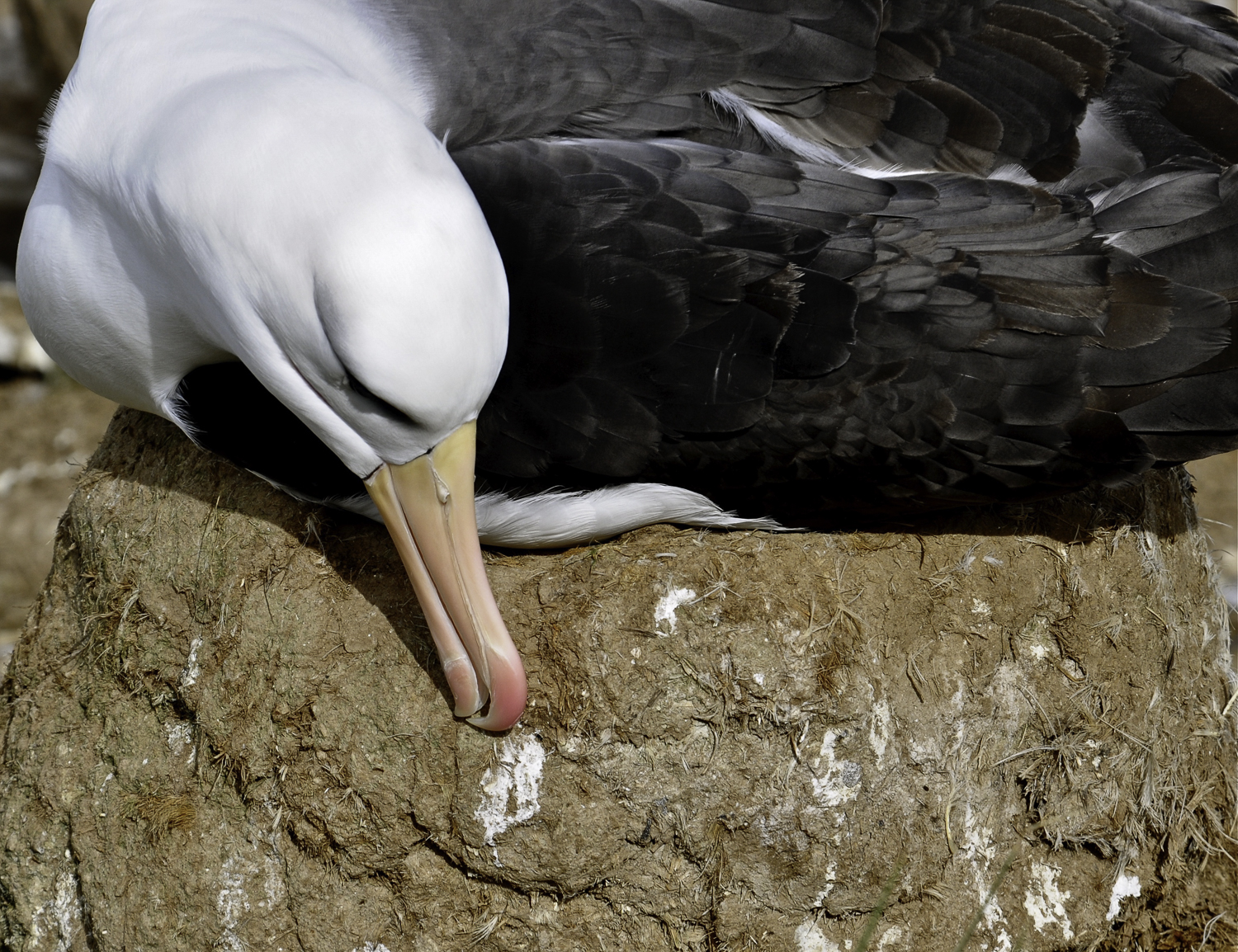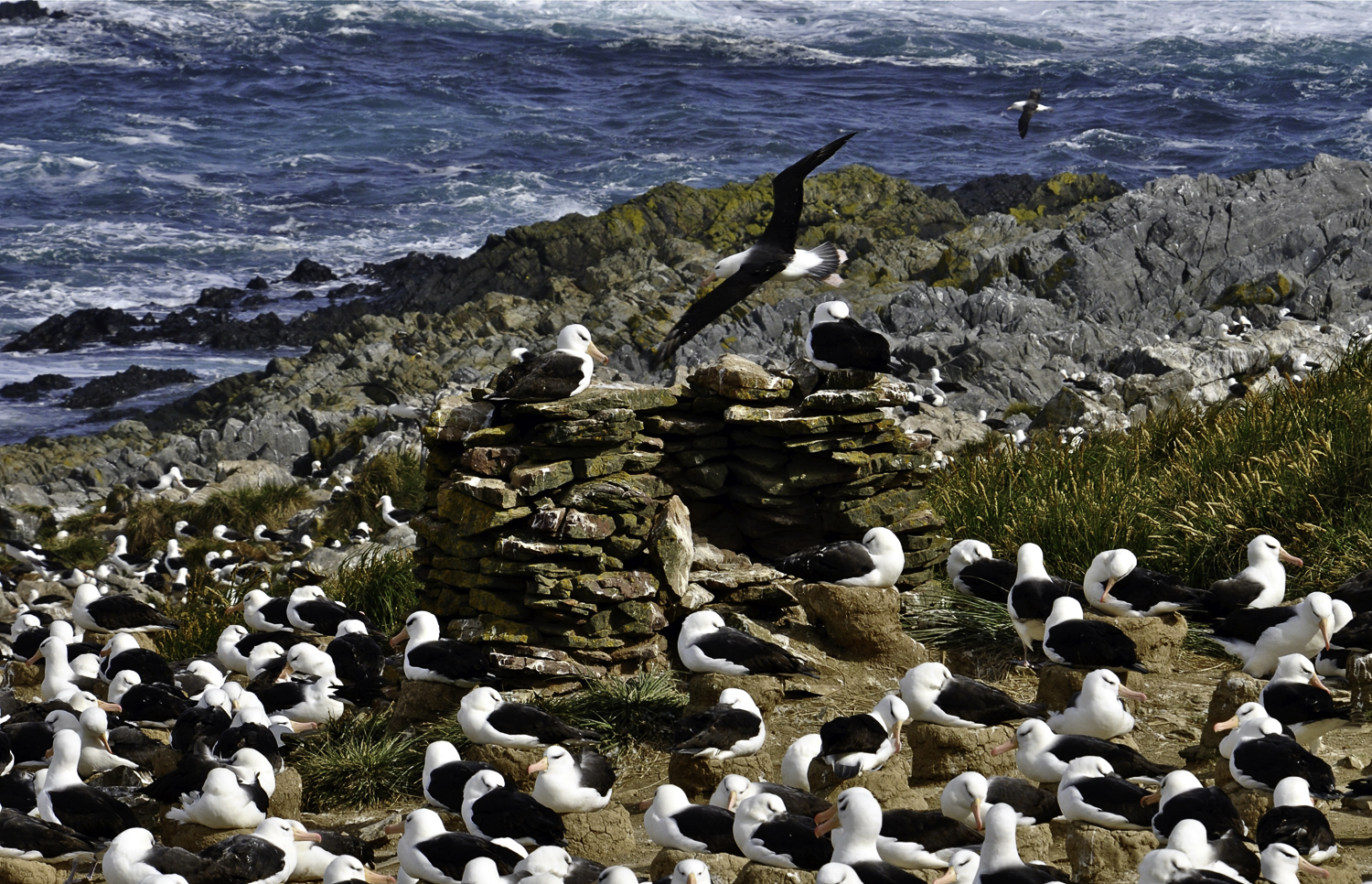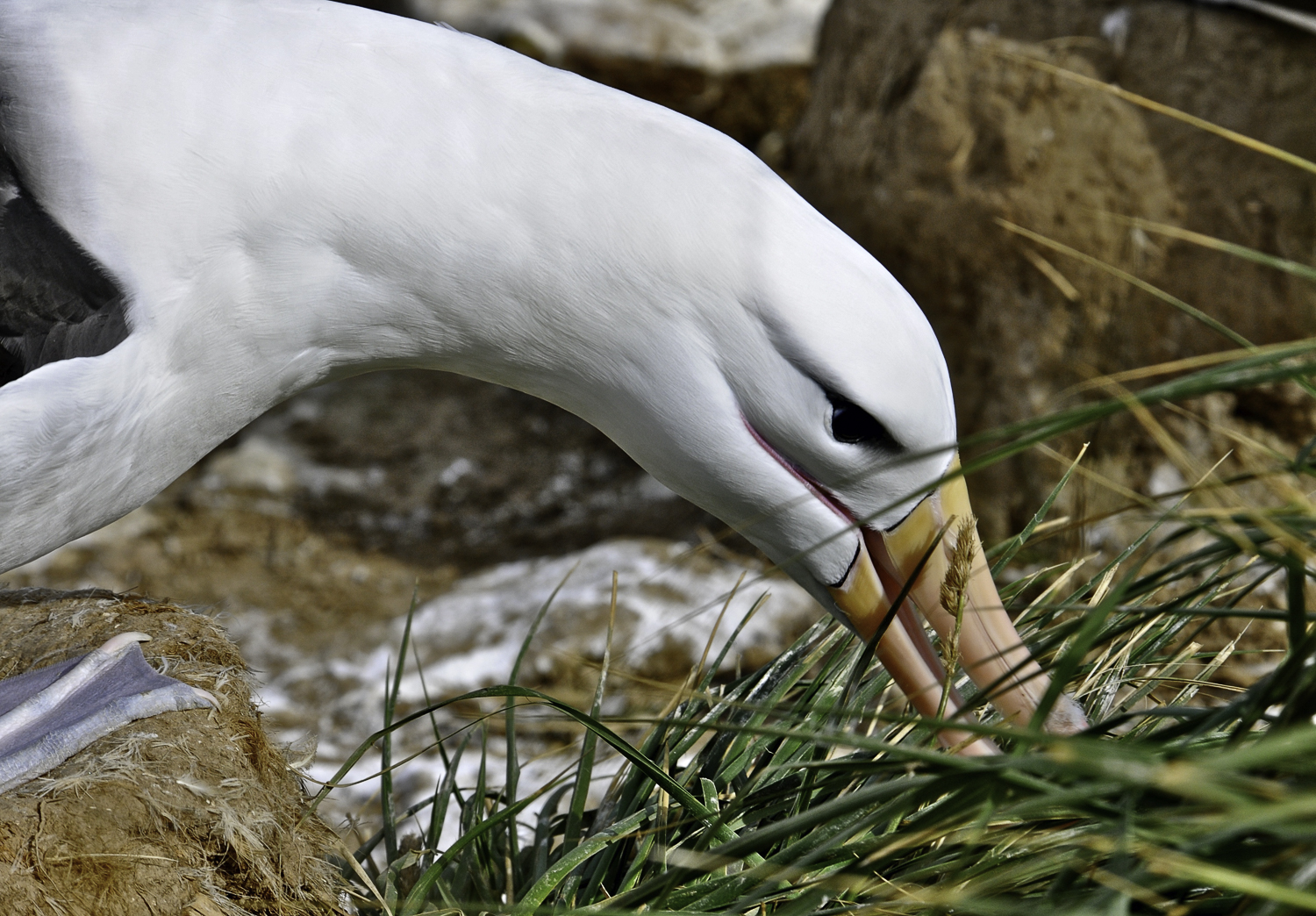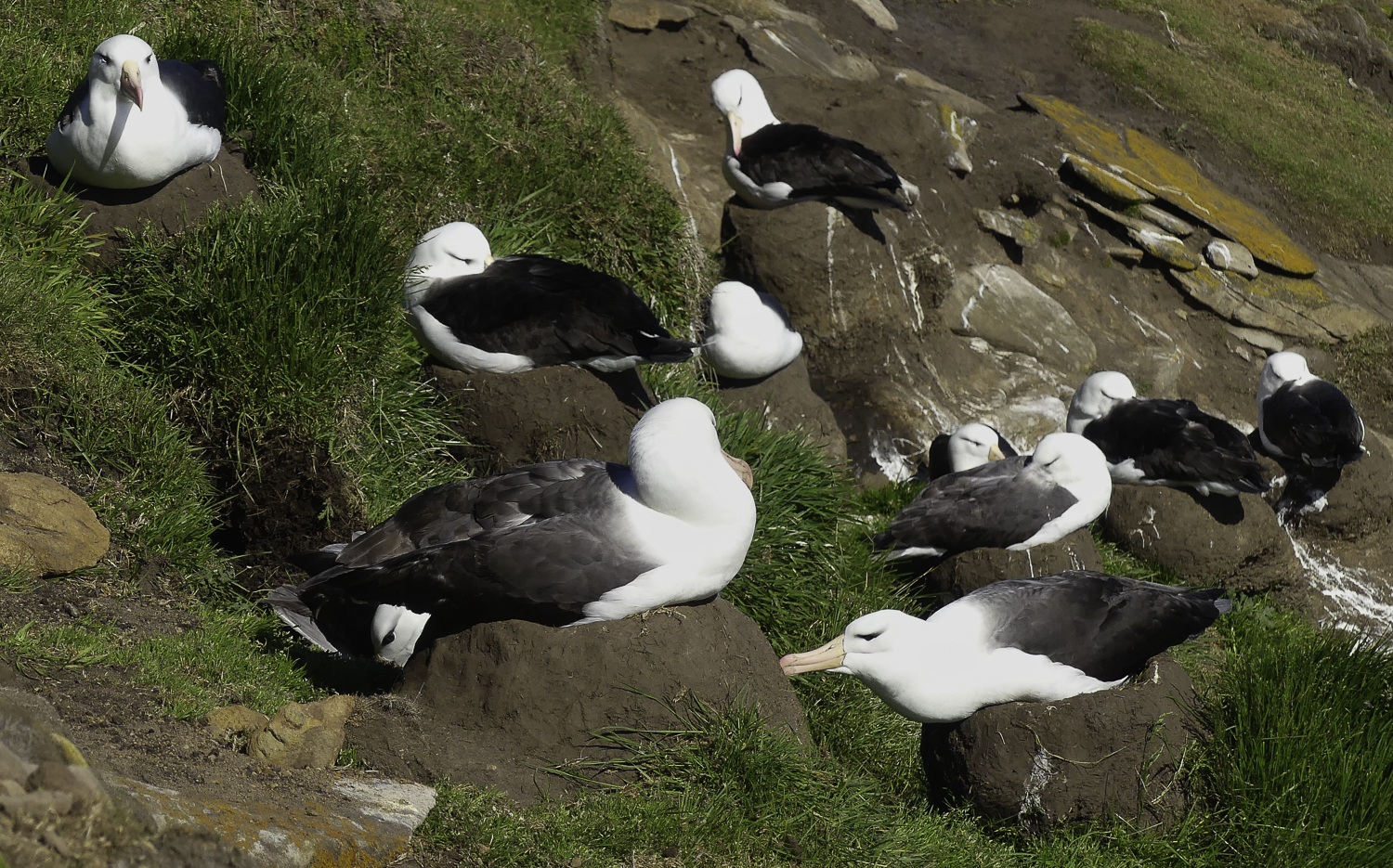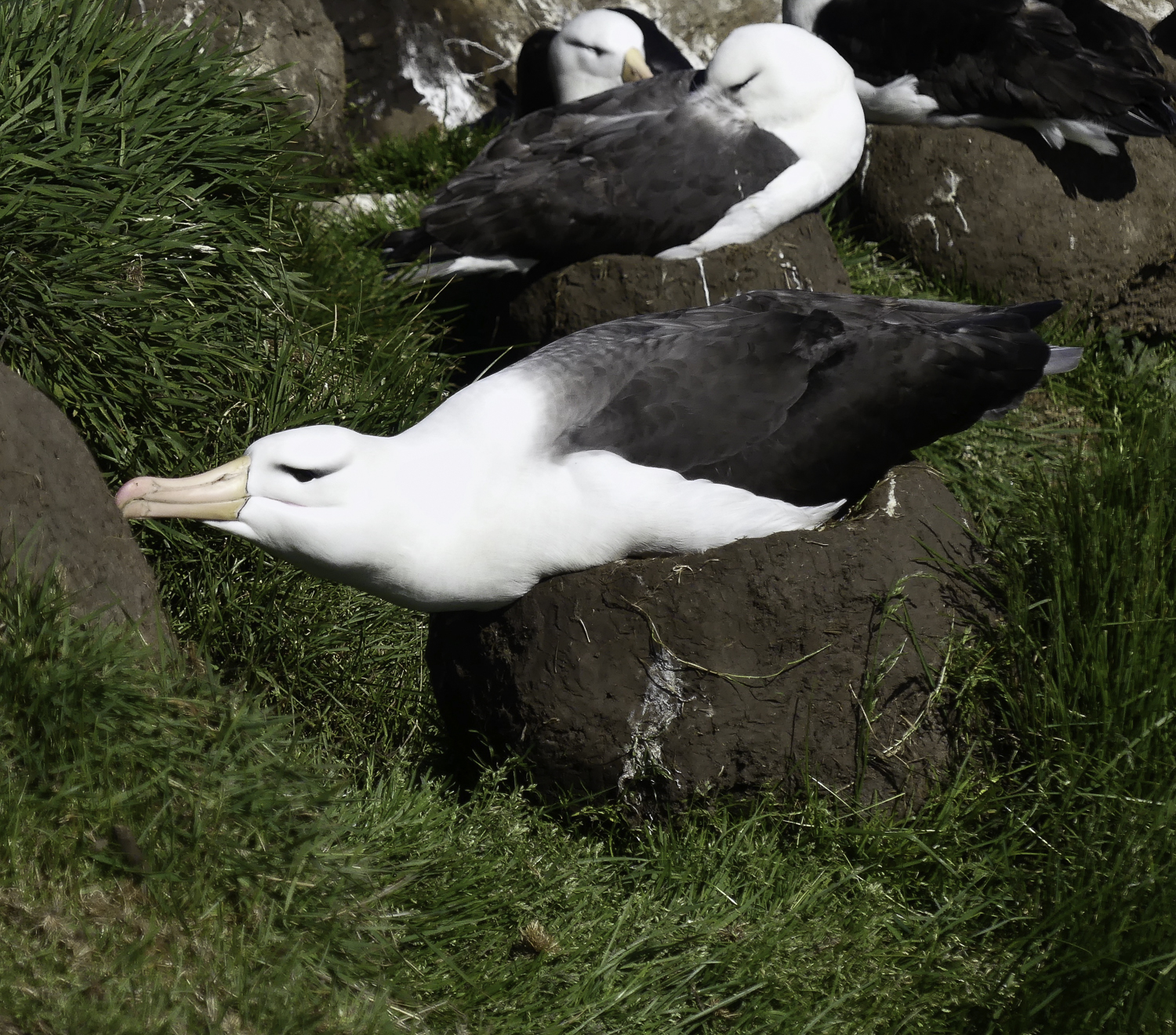ePostcard #86: Adobe Ingenuity (Black-browed Albatross Nests)
Sitting at the edge of a black-browed albatross colony on Steeple Jason Island in 2009, I watched as an albatross added freshly collected chunks of mud to the thick walls of its pedestaled and well-proportioned bowl nest, using its large bill to press each addition into place. Looking at the nest with my binoculars, I could see that it wasn’t just mud—it was a durable mixture of mud, grasses, bits of feathers, and guano. Adobe construction, albatross-style! Fast-forward to 2018 and a black-browed colony on Carcass Island, where the adobe mixture is entirely different and illustrates their ability to adapt to the raw materials at hand. In this case, a different soil type (silty and clay-rich?) that didn’t appear to need additional binding and strengthening materials to provide structural integrity. In contrast to the adobe nests on Steeple Jason, these nests had smooth adobe walls (both inside and out) and I observed the albatrosses using their bill like a plaster’s trowel. There were regular pauses during the plastering process to allow the mud to dry and harden before adding more. I had to smile, because this also explained all those muddy bills I saw in the colony and the steady procession of albatrosses visiting a nearby freshwater spring, from which they emerged with clean bills.
Birds are the most consistently inventive builders in the animal world, and their nests provide us with countless examples of superbly functional design. I have always been fascinated by the startling diversity in avian architecture we see around the world, from the minimalist and camouflaged perfection of an oystercatcher’s simple scrape on the beach to the thatch-woven, communal nests that can house up to 100 pairs of African social weavers, In our ePostcard archives, check out #13: Sociable Weavers (South Africa) and see photos of these remarkable little birds and the huge nest structures they build.
In Pliny the Elder’s famous Natural History of 77-79 CE, we have the first mention of bird nests made of mud: “According to the theory that men acquired their first notions of architecture from birds, we are told that Doxius, the inventor of clay houses, took the hint from swallows.” I’m sure that If you have had the pleasure of rafting a canyon country river, you’ve probably seen a busy colony of cliff swallows and their gourd-shaped mud nests. Mud offers some especially intriguing construction possibilities, and is a building material that has been used for millennia by both birds and humans. In a way, it is surprising that mud is crucial to nest building in only about 5% of bird species, and only a small proportion of those build their nests completely or predominantly from mud. A strong motivation for using mud as a construction material is that it can be easily molded into the required shape and size. Adhesion is a key requirement if the mud nest is to be built on a cliff face or any other vertical surface. Wet mud can form a strong glue, and some birds add their saliva, which seems to have the effect of increasing the mud’s adhesive qualities.
The thick mud walls of the black-browed albatross’s nest offer many of the same advantages as an adobe house in desert country. Strong, durable, adhesive, and readily available, mud helps stabilize the all-important temperature of the nest. The thick adobe walls absorb the heat of the sun by day and slowly release it at night to keep the nest’s interior warm for the benefit of eggs or chicks. In the harsh climate of the Falklands or South Georgia, an adobe nest is a distinct advantage. Black-browed Albatrosses live a mostly pelagic (exclusively at sea) life, returning to land only to breed. Most tend to nest on top of tussock-clad cliffs or on steep slopes, The nest is re-used annually and the young birds have a strong bond to their colony of birth. One egg is laid and both parents will take turns incubating the egg for about 70 days. The chicks are born with grayish white down and are brooded for one to four weeks. Chicks fledge after 120 days and they reach sexual maturity after 7 to 9 years. Once hatched the chicks take another 4 months before they fledge (take their first flight).
Special Note: Black-browed albatross are currently listed as endangered by the IUCN Red List. The rationalization for their conservation status is the rapid decline in their populations. This decline is due to deaths attributed to long-line and trawl fisheries (net and line entanglement), disruption in prey populations, plastic ingestion, natural disasters (floods, fires, & volcanic activity), habitat destruction, pollution, and disease.
click images to enlarge
click images to enlarge
To help build global awareness, we would appreciate it if you would share this post with your friends and colleagues. Please choose one of the options below which includes email and print! Thank you.

